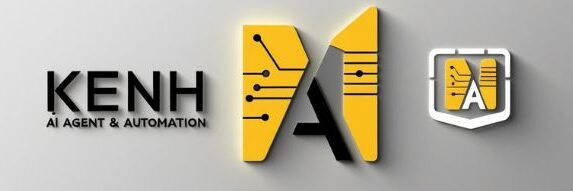AI Workflow Automation: Reduce Costs, Increase Speed
Introduction
In today’s fast-paced economy, speed and efficiency are key competitive advantages. Artificial intelligence (AI) workflow automation is no longer a futuristic concept—it’s a critical tool for modern businesses aiming to reduce operational costs and respond faster to market needs.
This article dives into how AI workflow automation works, its benefits, tools that power it, and how leading organizations are leveraging it to accelerate productivity while slashing expenses.
What is AI Workflow Automation?
AI workflow automation is the process of integrating intelligent systems—primarily AI agents and machine learning models—into workflows to automate repetitive tasks, optimize decision-making, and streamline business operations.
Rather than relying solely on human intervention, AI workflows can:
Trigger actions based on specific data inputs
Make contextual decisions using LLMs
Coordinate with APIs, software platforms, and databases
Learn from previous outcomes to optimize performance
Key Components of AI Workflow Automation
1. AI Agents (Autonomous Task Handlers)
These are intelligent systems that can operate independently:
Plan tasks
Access tools
Make decisions
Provide reasoning
Popular frameworks:
AutoGPT, AgentGPT, CrewAI
2. Large Language Models (LLMs)
These models interpret instructions, generate text, and make decisions:
GPT-4 / GPT-4o (OpenAI)
Claude 3 (Anthropic)
Gemini 1.5 (Google)
3. Workflow Builders & Orchestrators
Zapier + AI: Connect apps and automate tasks via LLMs
Make.com (Integromat): Visual AI workflows
LangChain & Flowise: Custom Python or no-code chains of logic
Autogen (Microsoft): Multi-agent coordination and orchestration
4. Task-Specific Tools
OCR + NLP for reading documents
Speech-to-text for call center logs
Computer Vision for industrial or logistics automation
5. Vector Databases + Memory Systems
To store and retrieve context dynamically:
Pinecone
Weaviate
FAISS
Real-world Applications of AI Workflow Automation
1. Customer Support
Chatbots and email responders resolve Tier 1 tickets
AI pulls knowledge base or CRM data instantly
Auto-routing complex cases to humans
Results:
30–50% drop in first-response time
Increased customer satisfaction (CSAT)
2. Finance & Accounting
AI reads invoices, matches POs, triggers payments
Generates financial reports using structured data
Assesses fraud patterns using anomaly detection
Results:
70% reduction in time spent on monthly close
Reduced financial errors by 40%
3. Marketing Automation
AI agents draft newsletters and social media content
Analyze campaign data to suggest next steps
Generate ad copies A/B tested at scale
Results:
Cut campaign ideation time by 60%
Improved CTR and engagement
4. Operations & Logistics
AI optimizes delivery routes using traffic + weather data
Tracks shipments and updates clients in real time
Manages inventory forecasts using ML
Results:
25% cost savings in fuel and warehousing
Higher on-time delivery rate
Case Study: AI Agent for Customer Service
Company: Mid-sized SaaS firm
Problem:
High ticket volume overwhelmed the support team, especially for repeated “how-to” or billing questions.
Solution:
Deployed a GPT-4-powered agent via LangChain + Zendesk integration
Integrated knowledge base + CRM history
Agent could answer, resolve, or escalate tickets
Results After 3 Months:
55% of support tickets resolved autonomously
Reduced support team load by 40%
CSAT score increased by 22%
Annual cost savings: $120,000+
Challenges and Considerations
1. Data Privacy & Compliance
Ensure AI systems do not leak customer or financial data
Implement strict access control, encryption, and logging
2. LLM Hallucinations
Prevent AI from generating false outputs
Use retrieval-augmented generation (RAG) + human approval
3. Integration Complexity
Building workflows across apps like Slack, Notion, Salesforce can be messy
Start with modular design and low-code platforms
4. Employee Resistance
Automation fears can cause morale dips
Emphasize AI as augmentation, not replacement
5. Cost vs ROI
Some enterprise LLM APIs are expensive
Carefully pilot before full rollout
Future Outlook of AI Workflow Automation
1. Multi-Agent Workflows
Instead of a single AI, multiple agents will:
Plan tasks
Research data
Execute actions
Validate outcomes
This simulates real human collaboration digitally.
2. Self-Improving Systems
AI agents will observe outcomes and revise workflows
Use feedback loops to optimize for time, cost, or quality
3. Natural Language Workflows
You’ll say:
“Automate all invoice verifications under $1,000 every Monday.”
And the AI agent builds the full logic stack and connects it to your systems.
4. AI in Low-code/No-code Platforms
Every SaaS platform—from Shopify to Monday.com—will embed agentic automation natively.
5. AI Workflow Marketplaces
You’ll be able to buy pre-built AI workflows the same way you buy plugins or templates today.
Top Tools for AI Workflow Automation
| Tool | Purpose | Ease of Use |
|---|---|---|
| Zapier AI | Workflow builder with AI triggers | ⭐⭐⭐⭐ |
| LangChain | Developer-focused chain logic | ⭐⭐⭐ |
| Flowise | Drag-n-drop AI logic with OpenAI | ⭐⭐⭐⭐ |
| Make.com | Visual builder, API-rich workflows | ⭐⭐⭐⭐ |
| OpenAI GPT-4 API | LLM brain for agents | ⭐⭐⭐ |
| AutoGPT | Autonomous task completion | ⭐⭐ |
Getting Started: Step-by-Step
Step 1: Choose a Use Case
Email replies, support tickets, data entry, etc.
Step 2: Select Your Tools
For non-devs: Zapier + GPT-4
For devs: LangChain + Pinecone + OpenAI
Step 3: Build MVP Workflow
Start with one or two triggers + AI actions
Monitor, test, and iterate
Step 4: Measure & Scale
Track ROI (time saved, errors reduced, costs cut)
Expand to other teams or functions
Final Thoughts
AI workflow automation is not a distant dream—it’s today’s competitive edge. By reducing costs and increasing speed, it allows companies to operate leaner, smarter, and faster. The best part? You don’t need to be a developer to start.
Whether you’re automating emails, finance reports, or product listings, the key is to start simple, iterate quickly, and keep your workflows measurable.
Ready to Automate with AI?
🚀 Join our recommended AI platform and start building your own AI-powered workflows—no code required.
